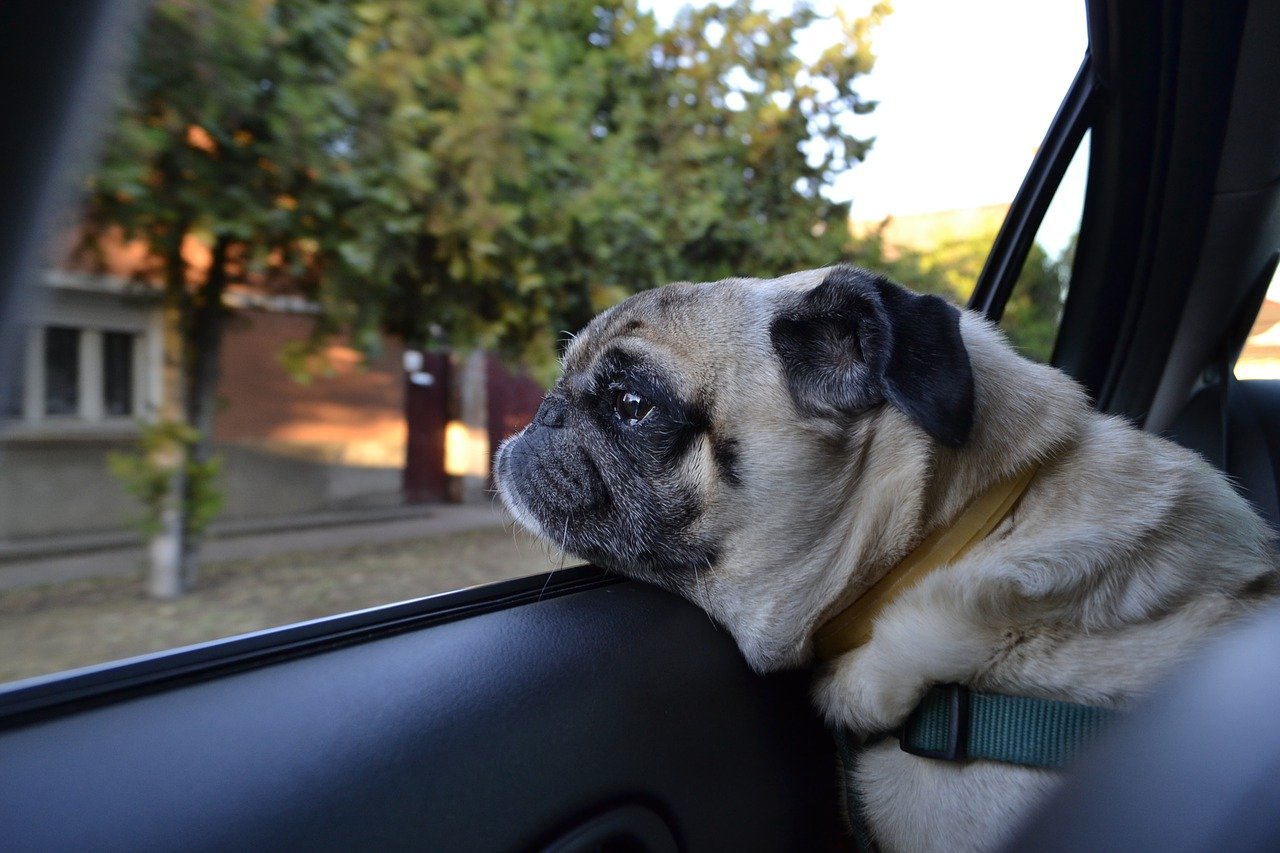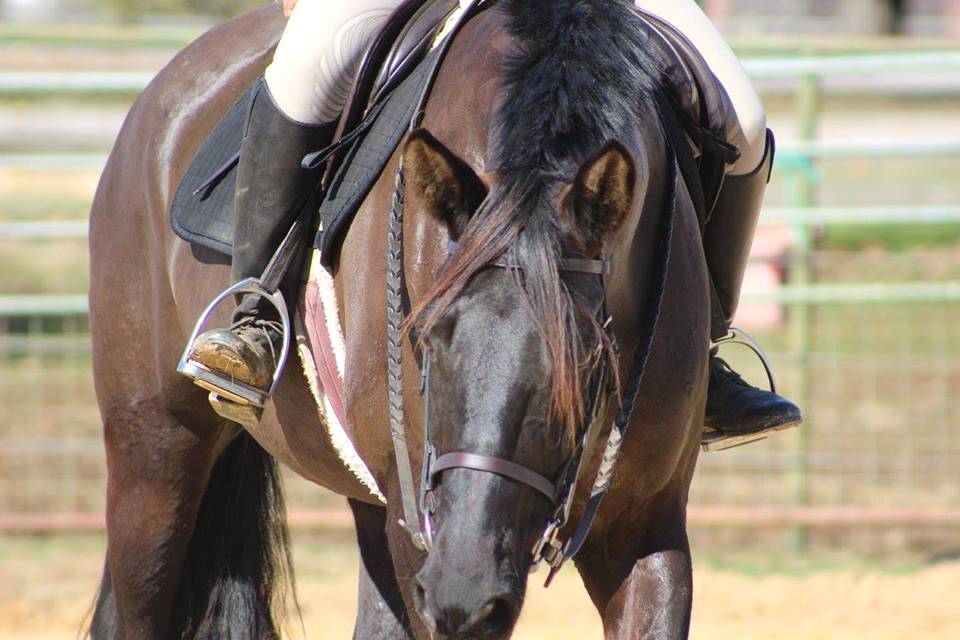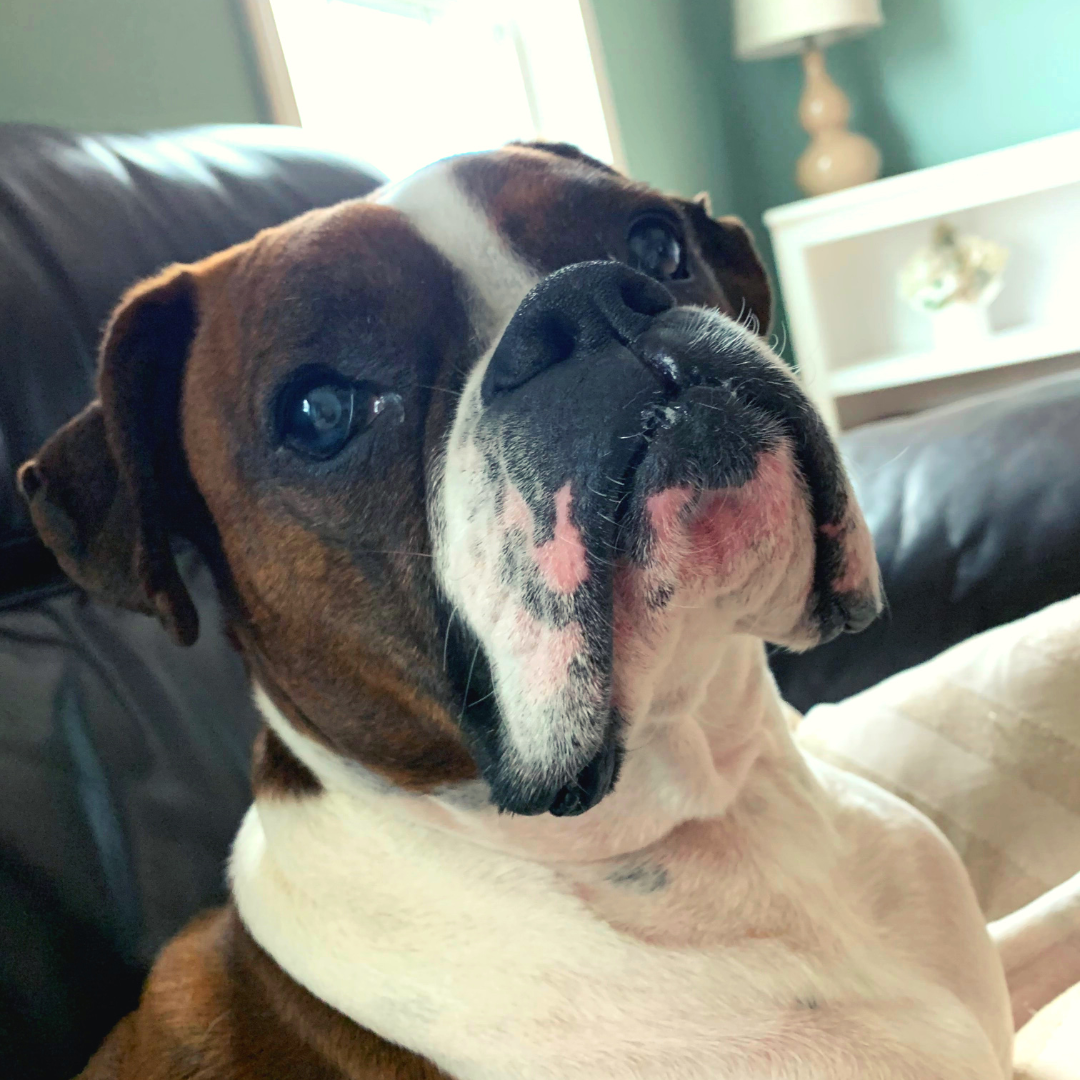Ground Transportation 101
Domestic US Pet Transportation Options for Pets That Can't Fly
USA Domestic Pet Transportation
Many airlines have tightened regulations on several breeds and species that could previously fly via their pet cargo programs within the United States. The good news is we can help, and we've moved many pets across the country via ground transportation. Including Guinevere, who moved to Florida from Wisconsin!
 Not sure if your pet falls within this category? Animals that fall under these new restrictions include:
Not sure if your pet falls within this category? Animals that fall under these new restrictions include:
Snub-nosed breeds:
Many airlines have had bans on snub-nosed breeds (think pug, french bulldog, boxer, Persian). With United Airlines following suit in 2018, our ability to transport these breeds using their PetSafe program ceased.
Large Breeds:
While it is possible to fly larger breeds (based on crate size) on some airlines domestically, the limited routing that can accommodate them can create a bit of a logistical puzzle while researching air travel. If you need to determine your pet’s crate size, check out our guide on choosing the right pet travel crate. Another consideration for airlines that accept large pets is heat: embargoes out of warmer weather ports (like Phoenix) may have all pet travel embargoed during summer when high temperatures create a safety hazard.
Species other than dogs and cats:
With dog- and crate-specific restrictions also came new rules regarding species other than cats and dogs. Limited air travel options for birds, rabbits, turtles, pigs, and more have resulted in these pets falling under our growing group of ground transportation clients.
While we can’t circumvent airline regulations, we have relationships with pet transportation companies nationwide and remain dedicated to moving our clients’ pets to their new homes in the safest way possible. For this reason, we offer full management of a private ground relocation. It is not the only option; we feel it is the best. If you’re beginning your research and want to know your choices, here’s a brief explanation of some travel arrangements you could make for your pet.

Mattie moved from Texas to South Carolina.
Your Options: Types of Ground Transportation
Private Ground (our preferred method):
Our private ground transportation service includes a driver for just your pets (no pets other than your own will be added to this driver’s itinerary), which allows for personalized attention and care, consistent updates and expectations throughout the drive, and the elimination of added stress from unfamiliar pets.
Dedicated stops are provided every 2-4 hours to ensure your pets are walked, get a bathroom break, and have fresh water. Dogs are not required to travel in a crate if they are comfortable traveling in a vehicle. You can pack favorite items (bedding, home bowls, bags of food/treats, toys, etc.) to help make your pets more comfortable during the journey. Medication can be administered as prescribed if needed. We have a preferred partner network that goes through our training to uphold our high standards. You will also have the driver’s number and your relocation coordinator’s; photos will be provided along the trip (updates provided 2-3 times per day!).

Zoey traveled from Boston to Miami on a PetRelocation private drive.
Another benefit of ground is the lower cost of adding multiple pets (compared to air). Since drivers are paid by the hour and not based on the size and weight of each pet, a larger fur family of three or four can travel together for a more nominal increase in the overall cost, which can be a relief to those with the ground as their sole option.
What are the costs incurred for private ground transportation? Costs will vary depending on vehicle size needed, how many miles traveled, if an overnight pet hotel is needed, and duration of your pet’s trip.
Shared Ground:
Some companies provide what we call “shared ground transportation”. As a pet owner, your role in the process would be to request a shipment to be transported (in this case, your pet), connect with a driver from within that company’s network, and then determine individually whether to move forward with enlisting his or her services.
While this is certainly a lower-cost option than private ground, we do want pet owners to be aware of a few key differences:
The potential of MULtiple stops, other animals
To streamline costs and create delivery efficiencies for drivers, some companies will combine shipments headed in the same direction. This presents a possibility that your pet will be one of the multiple deliveries, which could add to the duration of an already extended trip by car. This may not be a good fit for pets that experience anxiety or pet owners who want to keep the journey as short as possible.
Training and Certification Requirements
Drivers hired through shared shipping services may not be formally trained to transport and handle animals or may not meet the certification standards to which PetRelocation holds its private ground drivers. This isn’t necessarily bad, but know that the likelihood of experiencing varied results is higher than if a shipper is vetted and qualified to be a pet shipper.
Less control over desired travel dates
Even though shared drives come with a lower price tag, this does mean that your move date may need to be flexible. Since other pet families may request to travel on a particular week, it may not always align with the week of transport you might be hoping for. Therefore, a shared drive would need you to be lenient on timing to coordinate with a driver’s schedule.
If lowering costs is critical for your pet’s move, the shared ground is something to look into—each move and situation is unique, and we know that private does not work for everyone!
Ensuring the safety and well-being of pets during ground transportation is crucial for pet transportation services. As a pet owner, you must ensure your furry companion is transported safely and securely. We recommend looking for the following information:
- Driver qualifications and experience: A reputable pet transportation service should provide information on the driver's qualifications and experience. This can include details such as their driving record and any certifications they may have. Knowing that the driver is qualified and experienced gives you peace of mind that your pet is in good hands.
- Type of vehicle used: The vehicle used for pet transport is an important consideration. Specialized vehicles equipped with climate control, safety restraints, and other features designed specifically for pet transportation can provide a safe and comfortable environment. Be sure to ask the pet transportation service about the type of vehicle they use and what features it has to ensure your pet's safety.
- Pet restraints: The use of pet restraints during transport is an essential safety measure. Whether it's through the use of kennels or other specialized restraints, pet owners want to know that their pets will not move around during transport and potentially get injured. Make sure to ask about the type of restraints used and how your pet will be secured during transport.
In conclusion, choosing a pet transportation service that prioritizes safety measures is crucial to ensure your pet's safety and well-being during ground transportation. By considering the driver's qualifications and experience, the type of vehicle used, and the pet restraints used during transport, you can make an informed decision when choosing a pet transportation service and have confidence in your choice.
If you have more questions about ground transportation, we encourage you to contact our team so you can make the best decision possible for your fur family’s upcoming journey.
